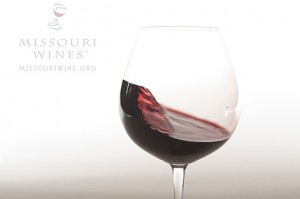September 30, 2014

Tasting wine at its most basic definition that seems like a really simple concept, right? However, that term can confuse and intimidate some people. We’ve all been tasting things our entire life. We’re pretty much experts. The only difference when it comes to tasting wine is that you are trying to identify the aromas and flavors you’re experiencing. Putting a name to the nuances you smell and taste in the wine.
Tasting can involve all of your senses, reflecting wine’s sensual nature. All you have to do is remember the “5 S” method:
See – The first step is to enjoy the wine’s color – straw or golden yellow for a white wine; brick, red or deep purple for a red wine; and salmon or bright pink for a blush or rose′. Simply hold your glass up to the light or against a white background to admire the hue.
Swirl – There are two primary reasons for swirling wine. One is to aerate and “open up” the wine, releasing the wine’s natural aromas. The other is the coat the sides of the glass, helping the next “S” in the process.
Smell – Much of wine’s pleasure is the aroma, which comes from the grapes, and the bouquet, which reflects the wine making process. To evaluate the bouquet, gently swirl your glass to release many of the wine’s natural aromas. Stick your nose down inside your glass and take a quick deep inhalation. Depending on the type of wine, you may discover hints of familiar smells – citrus, apples, flowers, plums or even chocolate. Some of the smells you might find from a white wine include Apple, citrus, tropical fruits, berries, flowers, vegetable, earth, and wood. Some of the smells you might find from a red wine include cherries, berries, spices, herbs, earth, and wood. After you’ve immersed yourself if the nose of the wine, you’re ready for everyone’s favorite step.
Sip – Take a small sip, roll it around in your mouth (a little like swishing mouthwash) and breathe in a little air (This is sometimes called a reverse whistle) to once again release the aroma as you are tasting. Notice the taste and the texture – how it feels in your mouth, from light and refreshing to full and robust.
Spit or Swallow – The former may sound impolite, but it’s not. In fact, it’s a very good way to taste if you are sampling many wines, and it can be done very discreetly. At many tasting counters, you’ll notice a large bucket for that purpose as well as for any leftover wine in your glass. If you are not driving or consuming too many wines, you may prefer to swallow the samples offered.
*Bonus S* Savor – Most wines have a lingering aftertaste or “finish” even after you have completed the actual tasting. Like sight and smell, this is another pleasurable bonus from “tasting” wine.
That’s it… the whole process in a nutshell. You’re on your way to being a wine taster. Why not grab a few Missouri wines you’ve wanted to try and host your own wine tasting to share your knowledge and practice your technique? Or head out to a Missouri winery and use the 5 S” method while tasting their unique offerings.

